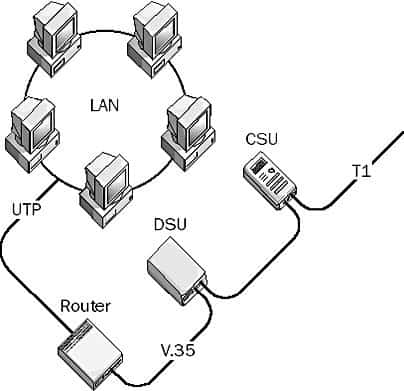DSU, or Data Service Unit, is a digital communication device that works with a Channel Service Unit (CSU) to connect a local area network (LAN) to an external communication carrier service.
What is DSU (Data Service Unit)?
DSU is a digital communication device that works with a Channel Service Unit (CSU) to connect a local area network (LAN) to an external communication carrier service or a wide area network (WAN) link (such as a T1 line). Data Service Units (DSUs) provide a modem-like interface between data terminal equipment (DTE) such as a router and the CSU connected to the digital service line. DSUs also serve to electrically isolate the telco’s digital telecommunication line from the networking equipment at the customer premises.

For example, in T1 transmission technologies, the DSU converts network data frames that are received from the router’s RS-232, RS-449, or V.35 serial transmission interface into the standard DSX framing format, encoding scheme, and voltages of the T1 line. The DSU also converts the unipolar networking signal into a bipolar signal suitable for transmission over the digital line. The DSU is also responsible for handling signal regeneration and for controlling timing errors for transmission over the T1 line. DSUs usually provide other functions such as line conditioning of the T1 line, as well as remote diagnostic capabilities such as Simple Network Management Protocol (SNMP), which allows the telco central office (CO) to monitor the state of the line at the customer premises.
CSU/DSU
DSUs are usually integrated with CSUs to create a single device called a CSU/DSU (Channel Service Unit/Data Service Unit). If these devices are separate, the telco usually supplies and configures the CSU, while the customer supplies the DSU. If the devices are combined, the telco usually supplies, configures, and maintains the CSU/DSU for the customer premises.
TIP
The DSUs (or CSU/DSUs) at either end of a digital data transmission line should be from the same manufacturer. If they are not, they might not communicate with each other correctly because different vendors employ different multiplexing and diagnostic technologies that are often incompatible with those of other vendors.